Farm microclimate
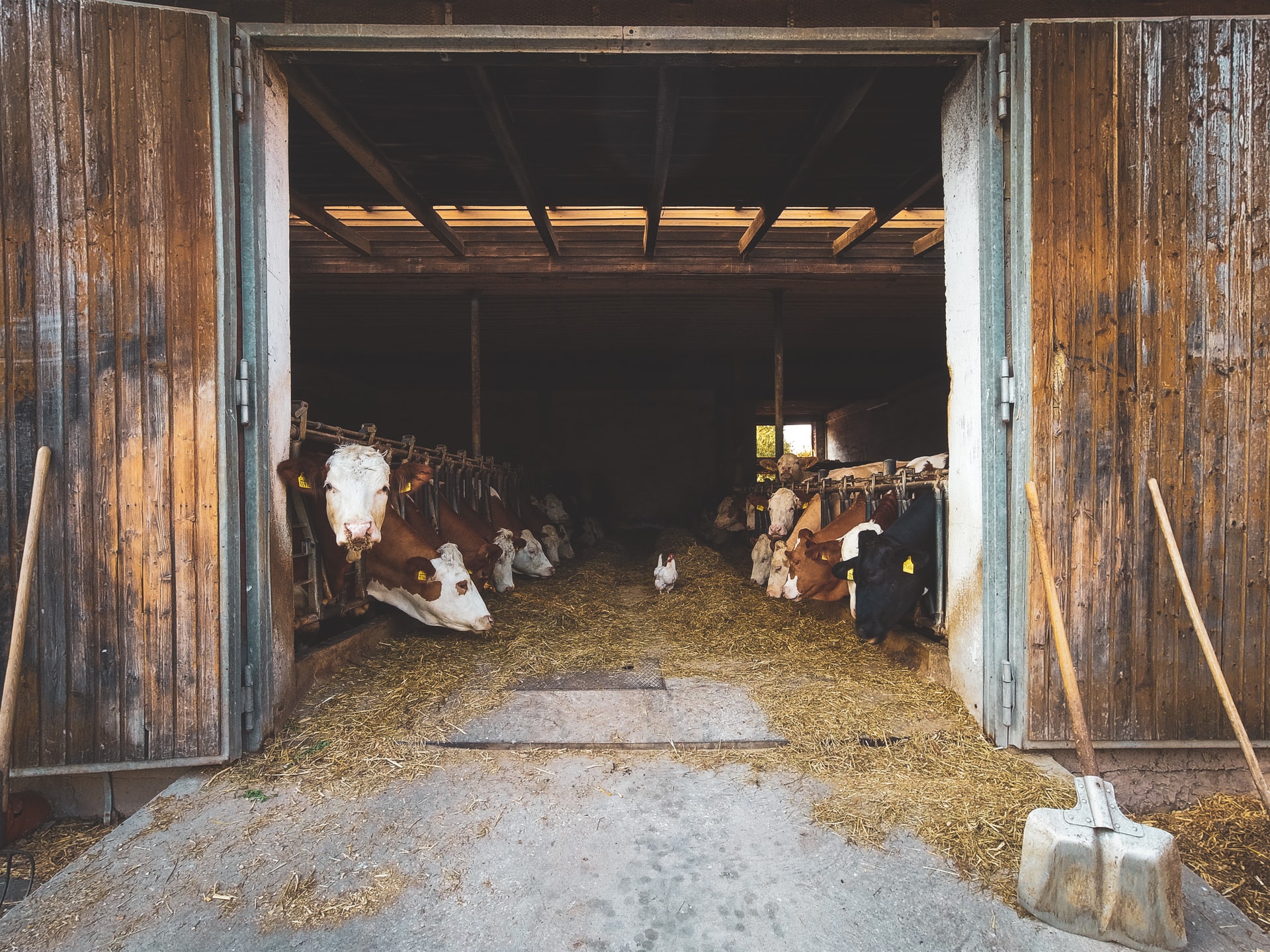
Modern commercial dairy production requires a special approach to the microclimate on the farm. High quality milk and animal health depend on the conditions of their keeping. At the same time, farms for dairy production for the most part do not have the means to control and manage the microclimate, in contrast to poultry farms and pig breeding enterprises. When organizing the correct process of controlling the microclimate, a prerequisite is the presence of an automated system for collecting climate data. This system should include a set of sensors that record these parameters, and systems for visualization and analysis of these data.
Let's take a look at the main climatic parameters required for a dairy farm:
- Air temperature
- Air humidity
- The speed and direction of movement of air masses
- Concentration of gases in the farm atmosphere (ammonia, methane, hydrogen sulfide)
- Illumination level
- Water temperature
To collect this data, various sensors are used, which allow recording the measured values at certain time intervals and transmitting them to the monitoring system. The monitoring system should serve not only for direct visualization of these data, but also for responding to critical changes in climatic parameters, warning personnel about such changes, and, in some cases, and responding to these changes, transmitting control commands directly to automation systems for climate control ( ventilation, heating, gate drive, water heating in drinking bowls and so on). The problem is that even if such systems are present on the farm, they do not have input management interfaces, which makes such scenarios impossible.
Let's consider further what consequences for animals can lead to critical climatic values:
- Intoxication of the body
- Diseases of the respiratory system
- Reduced feed consumption and feed conversion
- Decreased productivity
- Adverse effects on reproductive functions
For example, the parameters of gas content should not exceed the maximum permissible concentrations. For ammonia it is 20 mg / m3, for hydrogen sulfide 10 mg / m3 for animals of the main herd and 5 mg / m3 for young animals, for methane it is 50 mg / m3, for carbon dioxide for calves 0.15-0.20% (volumetric index), for older young animals and milking livestock - 0.25%.
Although animals adapt well to changes in ambient temperature, nevertheless, our research shows that during the transition period (especially summer-autumn and autumn-winter), animals are very sensitive to sudden changes in temperature. For example, we recorded a correlation between the influence of ambient temperature on milk yield and asked the farm manager to conduct research on this influence. Temperature and humidity sensors were installed on the farm, and as a result of our research, we found that the temperature inside the farm decreases during the feeding periods. It turned out that during the entire feeding process, which sometimes lasted thirty to forty minutes on the farm, the entrance and exit gates remained open, which caused a decrease in temperature, and in the case of a certain wind direction (along the farm), the temperature decrease was critical. In addition, it was recorded that at this moment the temperature of the water in the drinkers and the temperature of the feed on the feed table decrease. Solving this problem required a redesign of the feeding business process. The introduction of an automated system for monitoring temperature parameters and SMS warnings for responsible specialists, their immediate supervisor and farm manager in the event of a critical decrease in temperature, made it possible to quickly solve the problem of reducing milk yield and led to an increase in average milk yield per dairy cow by 600-900 grams (depending on from a group of animals) during the week.
Drinking water temperature also has a significant impact on productivity. The optimum water temperature is at least 15 degrees Celsius. There are drinkers with heated water directly in the drinker, and on some farms, water heating in the mains is used (for example, during heat exchange when cooling milk in the milking parlor).
Do not forget about the level of illumination on the farm. During feeding, the illumination level should be 50-75 lux. at the level of the feeding table, the recommended light coefficient is 1 / 10-1 / 15, KEO - 0.5-0.8%, depending on the groups of animals and conditions of keeping. A lower level of illumination has a negative effect on animals, oppresses them.
Particular attention must be paid to cleanliness on the farm, as it is she who is one of the factors that affect the gas pollution, the level of diseases and the quality of milk.
For example, it is necessary to carry out timely cleaning and disinfection of animal resting places, the photo below shows an example of sun beds that require such treatment:
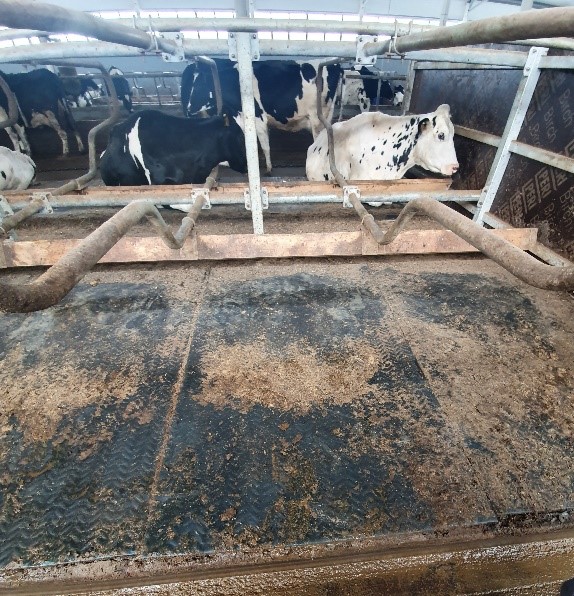
Photo 1. Dirty resting places for cows.
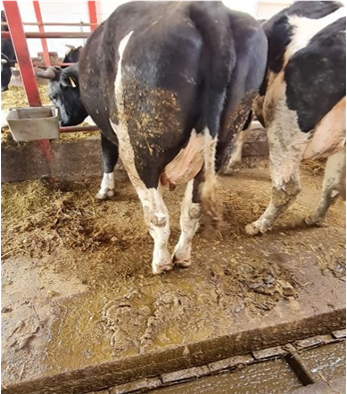
Photo 2. Dirty resting places for cows.
We will separately talk about the effect of water quality on the productivity of animals, but the example below suggests that the process of monitoring the cleanliness of drinking bowls on this farm is not well established:
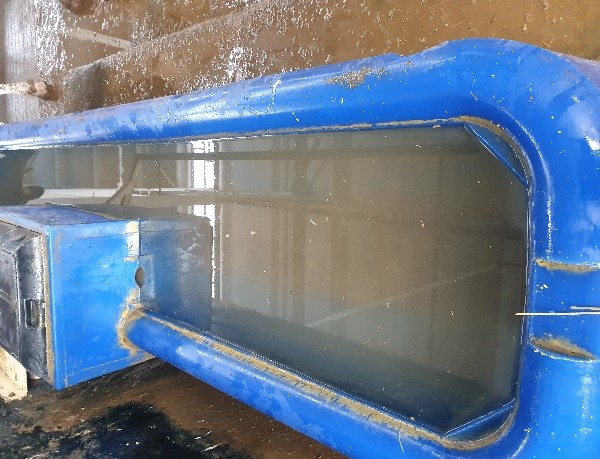
Photo 3. Dirty drinking bowls.
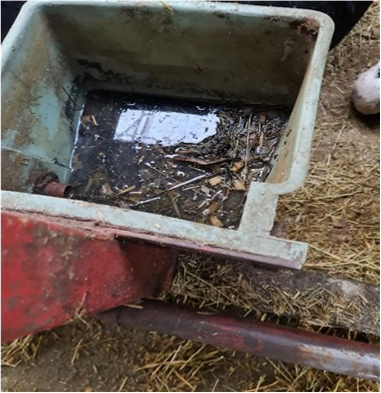
Photo 4. Dirty drinking bowls.
And special attention should be paid to the quality of ventilation. To understand how the ventilation system works, a “straw test” is performed. A bundle of straw is ignited inside the farm and the smoke extraction must be monitored. If the smoke does not go vertically upwards, but spreads across the floor, then it is necessary to carry out work to repair or change the ventilation system of the farm. Otherwise, cows will breathe in poisoned air, which will negatively affect their health and productivity. In the photo below, we see a cow, which developed purulent discharge as a response to an irritant in the form of ammonia.
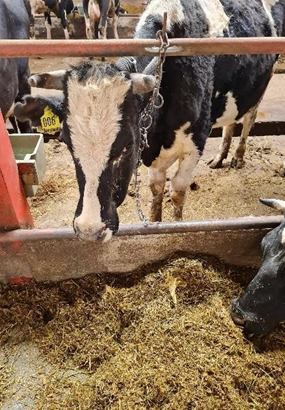
Photo 5. Inflammation of the eyes in a cow.
This article is a continuation of a series of articles on the important factors and business processes on the farm that you need to pay attention to. We have previously published articles on dairy farm audits, animal culling and animal handling during the transit period.
Ci sono domande?
Contattate i nostri esperti per saperne di più
